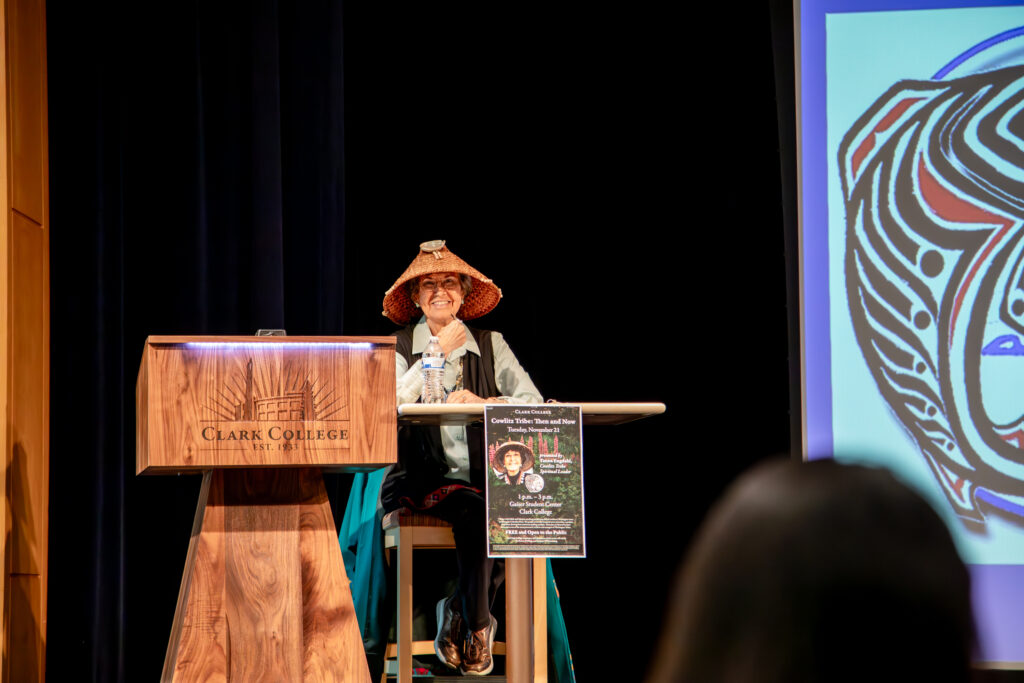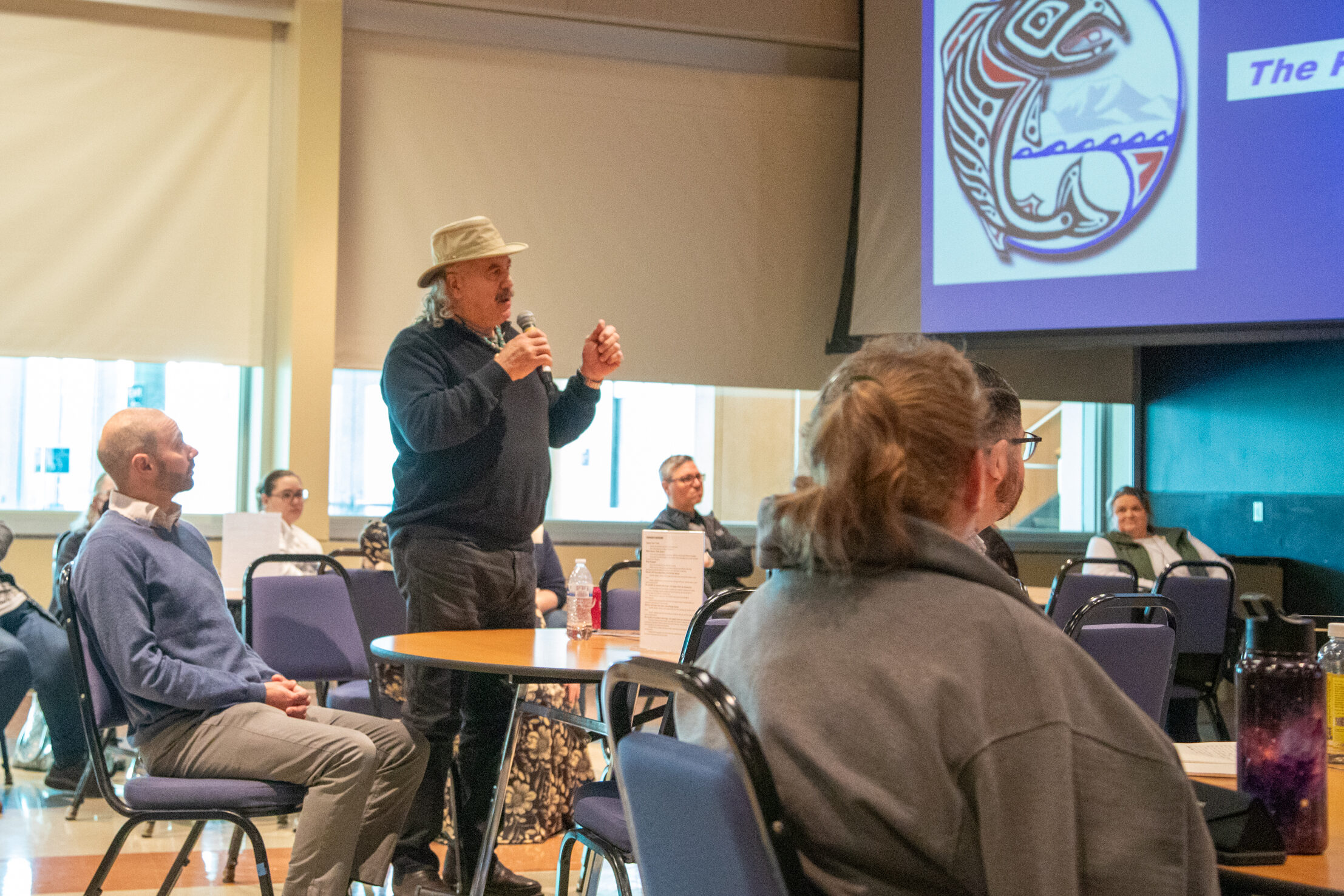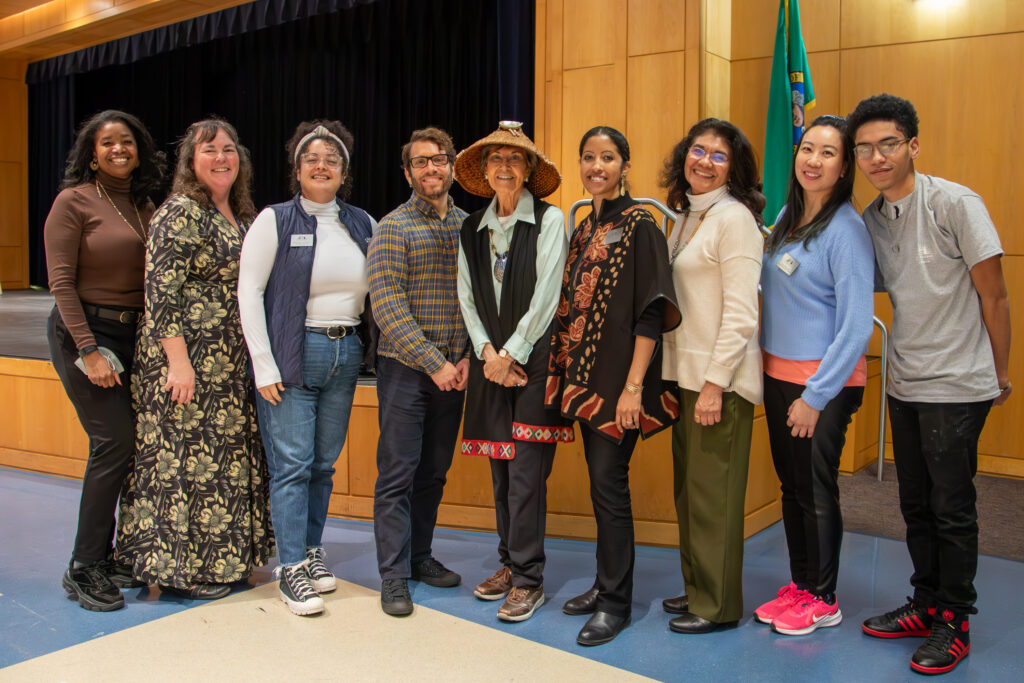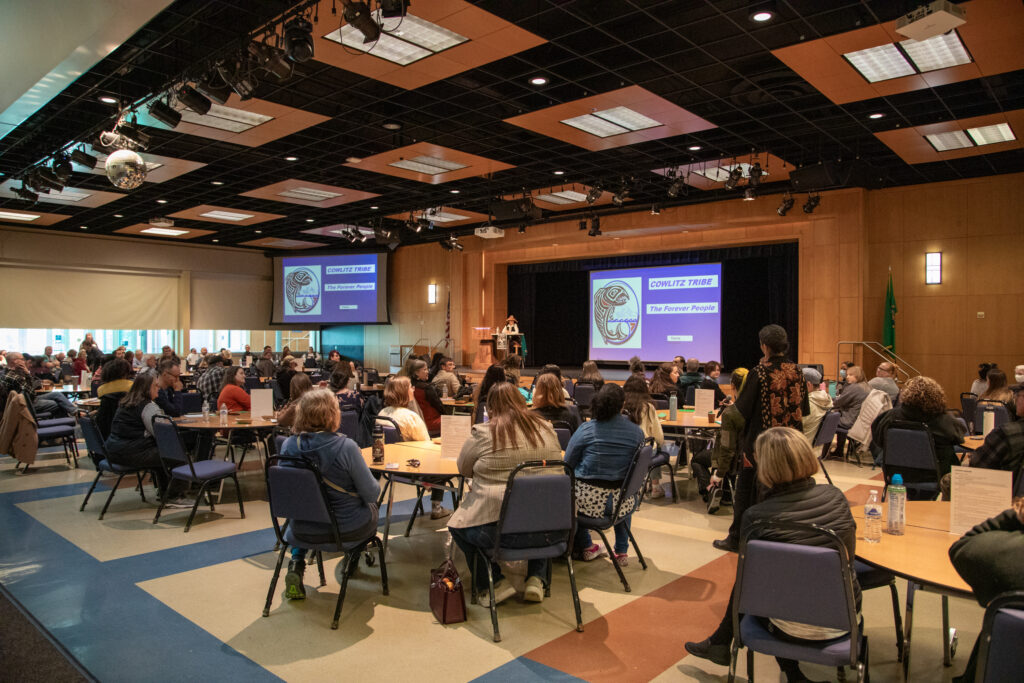Tanna Engdahl shares her tribe’s history, culture, and environmental stewardship

Tanna Engdahl, Cowlitz Tribe Spiritual Leader, sat on the stage in Gaiser Student Center and pointed to the image of a long, eel-like fish projected on the screen.
“Does anyone know what this is?” she asked.
Someone in the audience shouted, “Lamprey!”
Engdahl nodded and asked, “Has anyone tasted lamprey?”
In the sea of 130 people in attendance, only a few raised their hands.
Engdahl laughed, “Well, I haven’t–and I won’t!”
Engdahl captivated her audience of Clark employees, students, and the greater community during her presentation “Cowlitz: Then and Now” on November 21 in Gaiser Student Center. Held during Native American Heritage Month, the event was hosted by the college’s Office of Diversity, Equity, and Inclusion. Employees who attended received Power, Privilege and Inequity (PPI) credit.
“I am grateful to Tanna for connecting with the college community to share stories about the Cowlitz people,” said Vanessa Neal, Vice President of Diversity, Equity, and Inclusion. “I also want to mention that Tanna was an essential member of Clark’s 2022 Strategic Planning Committee, has supported the development of the Land and Labor Acknowledgement we use today, and continues to be involved with our Social Equity Advisory Council. I continue to be grateful for Tanna and the intentional relationship that we – as a college – are continuing to build with the Cowlitz Tribe.”
Engdahl’s presentation included taking time at the end to answer every question from the audience. She responded with thoughtful, informative answers.

Weaving stories
As Engdahl shared images on the screen, she told stories about her tribe’s history, culture, their struggle to have a homeland, and their environmental stewardship as they look toward the future.
Engdahl talked about how her tribe lived before white Europeans began settling in the Pacific Northwest. The Cowlitz people followed a cyclical rhythm of living on the land. Most of the time, they lived in longhouses in large villages near rivers and streams for easy transportation via canoe. Some of the tribe followed harvest cycles to gather huckleberries, wapato, camas root, and to fish and hunt for game including deer.
She shared how her people’s hands were rarely idle. They made everything they needed. They harvested cedar bark, soaked it in a creek to make it pliable, then wove it into dresses, capes, hats, sleeping mats, and more.
Although there was always so much work to be done, her people also gathered for dancing, drumming, and storytelling. So many stories to tell!
Engdahl spoke about how the presence of the white man changed her people. Their ships brought diseases that killed 98% of the Cowlitz people. Still, the white men kept coming. When the white men tried again and again to move her people from their homeland to reservations, the Cowlitz said “no.” Again and again.
She spoke about how alcohol and drugs destroyed individuals and tore families apart. She also talked about the importance of the Indian Child Welfare movement “to keep our children with their people, their families.”
Family and community—not just today but for generations into the future—is always at the forefront of everything the tribe does.

Looking to the future
Engdahl talked about how her tribe is being good stewards of their land. Long ago, her people harvested camas root, one of their staples in the diet. The Cowlitz are replanting camas in areas where it once thrived. Reintroducing camas bodes well for a future with sustainable native plants for indigenous foods.
Another good sign for the future: The Washington Legislature passed legislation requiring Since Time Immemorial: Tribal Sovereignty in Washington State curriculum or other tribally developed curriculum be taught in all K-12 schools. Despite the mandate being unfunded, more school districts across the state are offering courses that tell the essential stories of our indigenous brothers and sisters.
Engdahl emphasized a most important message: “We are still here.”
She said there is much work to be done as the tribe moves forward. And more stories to tell.
Engdahl teaches a course about the Cowlitz Tribe through Clark’s Continuing and Community Education program. She taught the class during Fall term and will teach it again during Spring term.

Photos: Clark College/Jenny Shadley












